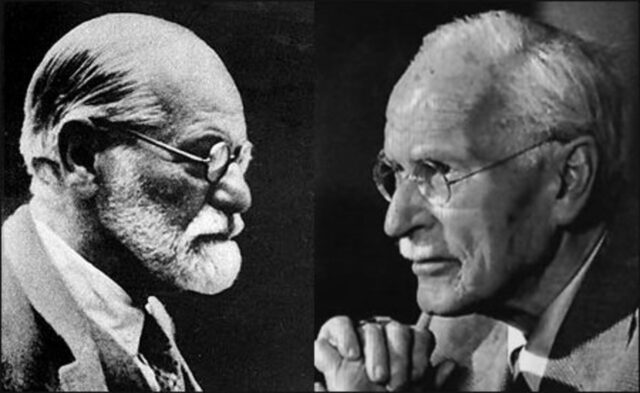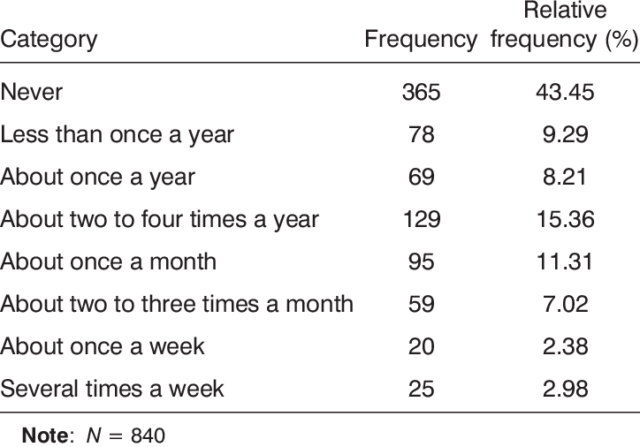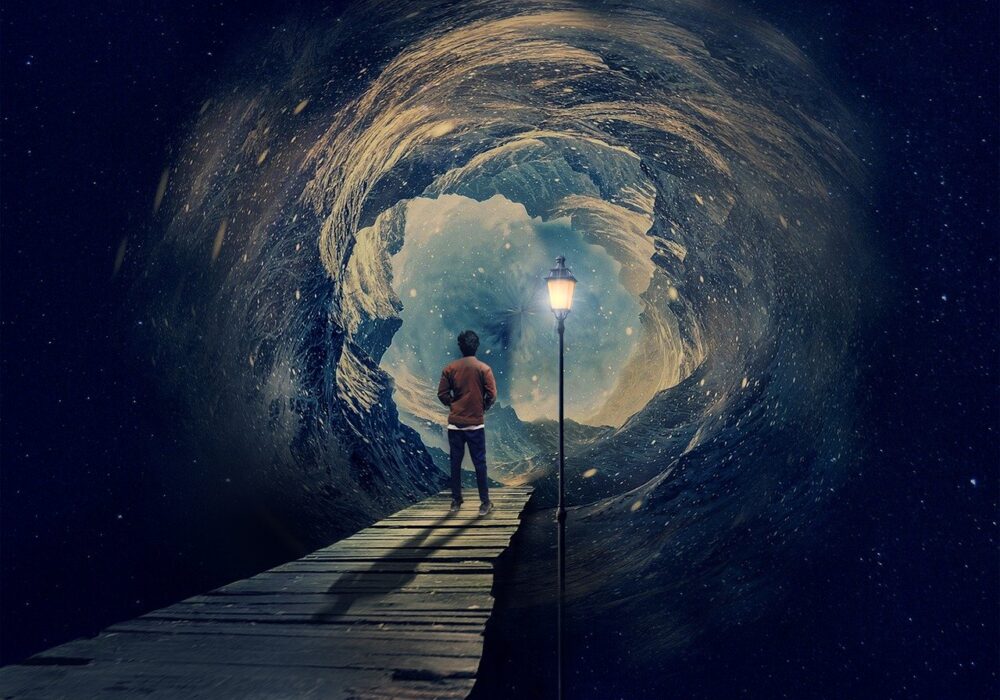Beneath conscious awareness, the inner monologue narrating your every move, is the unconscious. The unconscious is the shadowy mental storage unit where your brain hoards all the stuff you’re not actively aware of but that still manages to hijack your decisions1. Freud, who chain-smoked cigars and saw your mom in every dream you’ve ever had, believed this space was full of repressed memories, unspeakable urges, and unresolved daddy issues2. Basically, it’s the psychological equivalent of a basement full of boxes labeled “Do Not Open.” It’s also where about 95 percent of your mental activity happens, according to current cognitive science3. So, while you’re busy overanalyzing what someone meant by “k,” your unconscious is running your heart rate, solving low-key math, and remembering the layout of your high school locker room for no reason.

Carl Jung, who eventually broke up with Freud in the most intellectual soap opera of the 20th century, thought the unconscious went even deeper4. He introduced the idea of the collective unconscious, a kind of psychic group chat shared by all of humanity5. According to Jung, this shared mental space is full of archetypes—universal themes and characters we all somehow recognize even if we’ve never met them. The Wise Old Man. The Trickster. The Shadow. The Hero. Basically, the entire cast of every epic movie ever made. Today, you can find those patterns echoed in everything from superhero franchises to TikTok therapy. In fact, over 70 percent of cultures across the globe include mythological figures that match Jungian archetypes almost perfectly6.
There are many who insist the solution comes from lucid dreaming, when you realize you’re dreaming while you’re still in the dream, and you suddenly get to rewrite the script. You can fly, teleport, throw logic out the window, or tell your boss exactly what you think and then melt into a sofa. Scientists are fascinated by this because it’s one of the few times the dreaming brain becomes meta-aware, aware that it’s aware, while still technically asleep7. About 55 percent of people report having experienced at least one lucid dream, and around 23 percent say they have them regularly.
You can actually train yourself to do this more often, and it doesn’t involve incense or sacrificing a goat on a full moon. One common method is called Wake-Back-to-Bed, where you set an alarm to wake up after five or six hours of sleep, stay awake for twenty minutes, then go back to bed while thinking about dreaming. Another method is reality checking, like pushing your finger through your palm or reading the same sentence twice. Eventually, you build the habit so well that you do it in a dream. Then there’s MILD (Mnemonic Induction of Lucid Dreams), where you repeat a phrase like “I will know I’m dreaming” right before bed8. These techniques can increase lucid dream frequency by up to 38 percent if practiced regularly9.

Now, here’s the part I didn’t expect to admit, as a psychiatrist and someone who considers themselves an agnostic Jew, not spiritual in the “crystals and chiming bowls” sense – but I still wonder. What came before now? What comes after we die? Consciousness seems too vivid, too strange, too specific to just switch off. More than 80 percent of Americans believe in some form of afterlife or continued existence – even if they don’t agree on the details10.
Humans have been trying to explain this for millennia. Ancient Egyptians thought the heart – not the brain – was the seat of emotion, so they preserved it and discarded the brain like expired yogurt11. Plato believed reality is a shadow of perfection. Aristotle countered with “let’s be rational.” Descartes gave us “I think, therefore I am.” Then Hume said “you” is just a stream of experiences. Kant added, “You don’t see reality – you see what your mind constructs.” Nietzsche said: There are no facts, only interpretations12.
Modern thinkers haven’t fared much better, but they’ve added tech. fMRIs and EEGs now let us watch the brain in real time. During lucid dreaming, the prefrontal cortex—normally snoozing—lights up, becoming up to 40 percent more active than during regular REM sleep13. Still, more than half of neuroscientists disagree on whether consciousness is a localized brain event or an emergent network-wide phenomenon14.
Some scientists, like Sara Imari Walker, believe consciousness might be the key to defining what counts as life15. Others, like Stuart Hameroff, suggest it’s a fundamental feature of the universe—something biology helps express, not create. Anil Seth calls consciousness a “controlled hallucination”16. Daniel Dennett compares it to a user interface – something elegant that hides messy code17.
And then there’s simulation theory. Nick Bostrom argues that if future civilizations develop the tech to simulate entire conscious realities, there’s a 50 percent chance we’re living in one18. Nearly 4 in 10 Americans under 30 agree19. So next time you lose your keys or glitch while trying to form a sentence mid-coffee, don’t worry – it might not be you. It might just be a rendering issue.
Footnotes
1. Freud, Sigmund. “The Unconscious.” The Standard Edition of the Complete Psychological Works of Sigmund Freud, vol. 14, 1957.
2. Gay, Peter. Freud: A Life for Our Time. W.W. Norton, 1998.
3. Bargh, John A. “The Unconscious Mind.” Science, vol. 321, no. 5890, 2008.
4. Jung, Carl G. Memories, Dreams, Reflections. Vintage, 1963.
5. Jung, Carl G. The Archetypes and the Collective Unconscious. Princeton University Press, 1959.
6. Campbell, Joseph. The Hero with a Thousand Faces. New World Library, 2008.
7. Voss, Ursula et al. “Lucid Dreaming: A State of Consciousness…” Sleep, vol. 32, no. 9, 2009.
8. LaBerge, Stephen. Exploring the World of Lucid Dreaming. Ballantine Books, 1990.
9. Stumbrys, Tadas et al. “Induction of Lucid Dreams…” Consciousness and Cognition, vol. 22, no. 1, 2013.
10. Pew Research Center. “Views on the Afterlife.” Religion & Public Life, Nov. 2021.
11. Breasted, James H. The Dawn of Conscience. Scribner’s Sons, 1933.
12. Magee, Bryan. The Story of Philosophy. Dorling Kindersley, 1998.
13. Voss, Ursula et al. “Lucid Dreaming: Neural Correlates…” Sleep, vol. 32, no. 9, 2009.
14. Bayne, Tim, and Chalmers, David. “What is the Unity of Consciousness?” Oxford University Press, 2003.
15. Walker, Sara Imari et al. “The Algorithmic Origins of Life.” Journal of the Royal Society Interface, 2012.
16. Seth, Anil. Being You: A New Science of Consciousness. Faber & Faber, 2021.
17. Dennett, Daniel C. Consciousness Explained. Little, Brown, 1991.
18. Bostrom, Nick. “Are You Living in a Computer Simulation?” Philosophical Quarterly, vol. 53, no. 211, 2003.
19. YouGov America. “Four in ten under 30s think simulation theory is plausible.” YouGov Survey, Aug. 2021.




